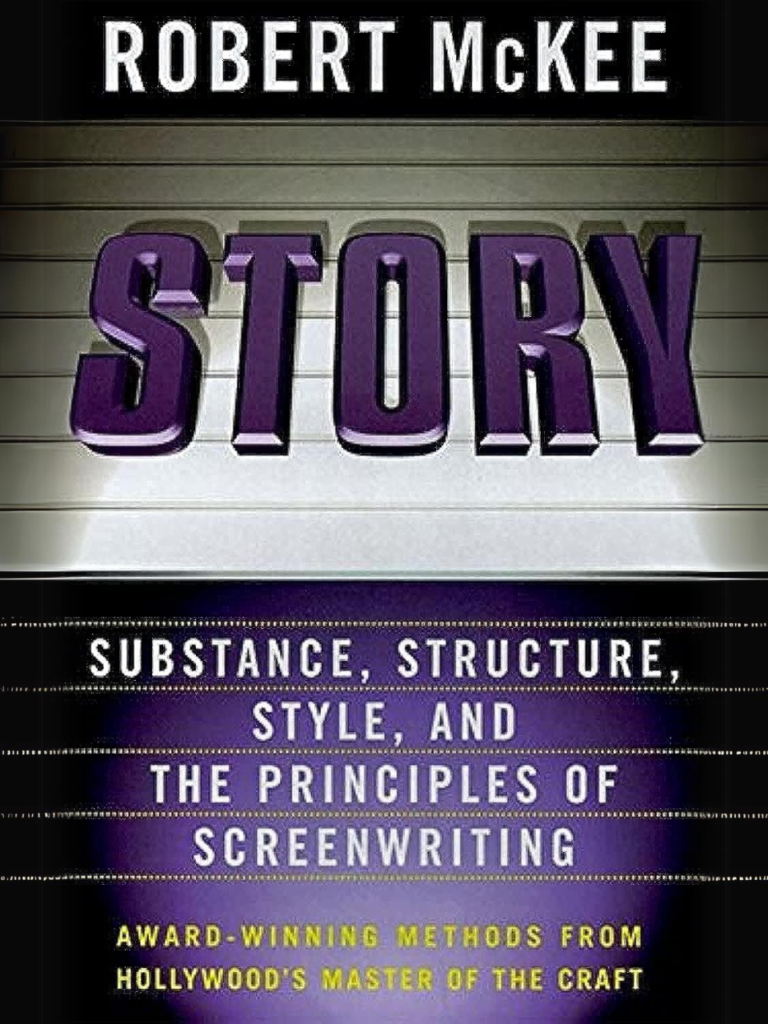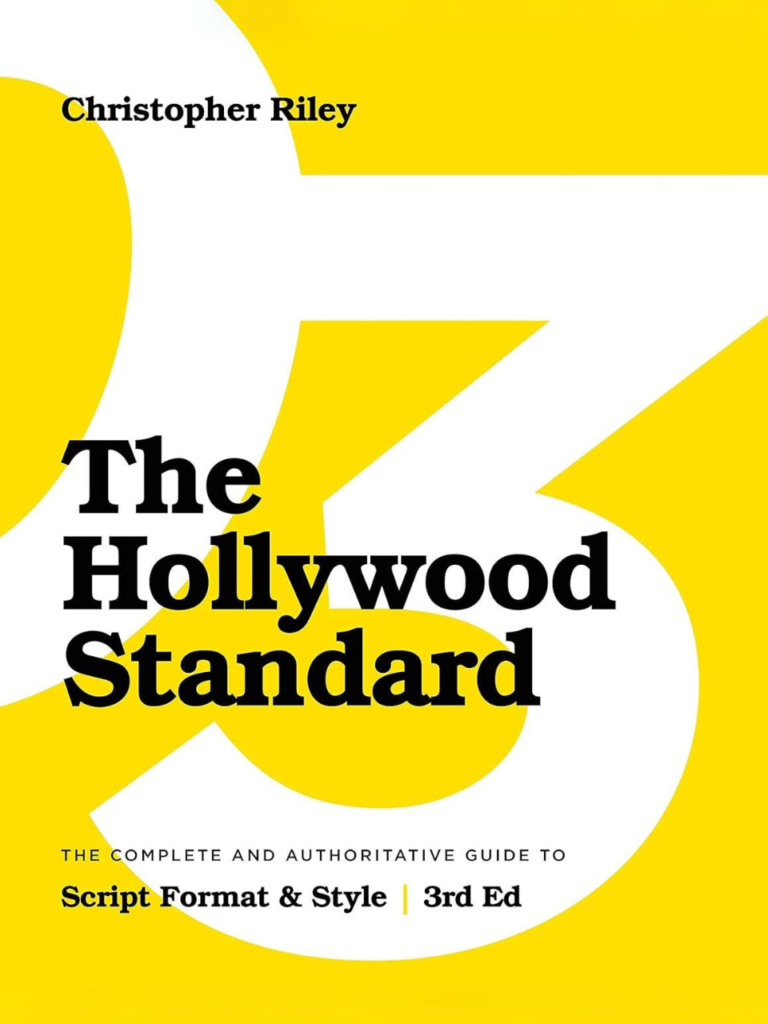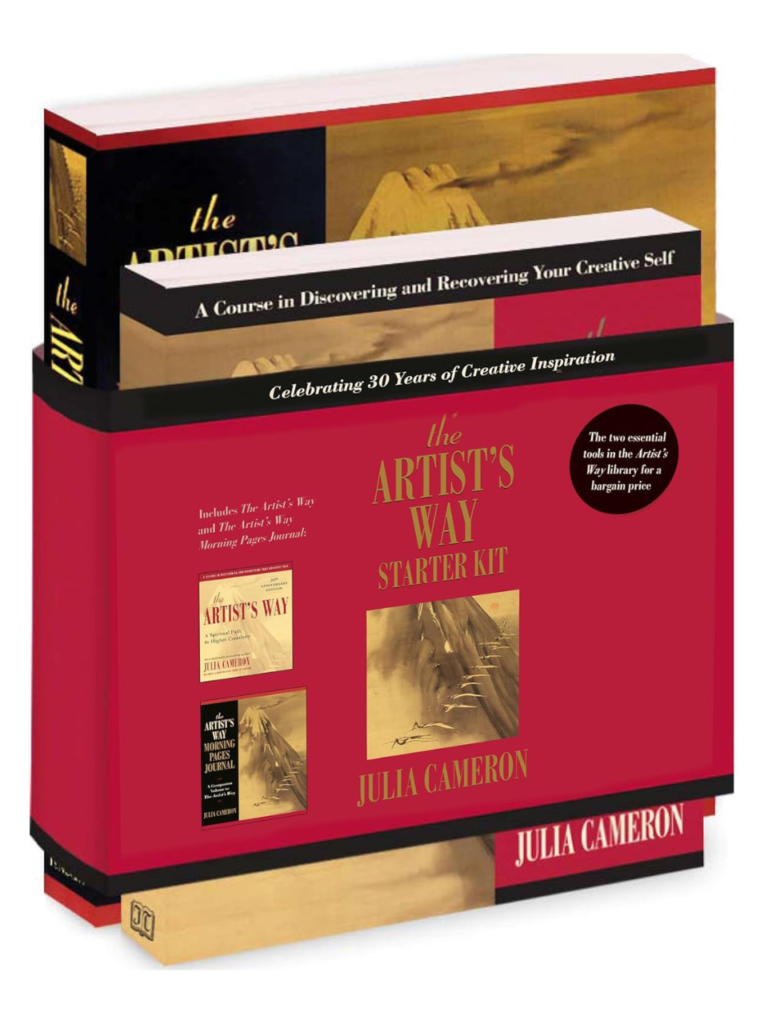This post may contain affiliate links. If you purchase through our links we may earn a small commission at no added cost to you. Thank you for your support!
Top 5 Best Screenwriting Books
I’ve curated over 20 screenwriting books and narrowed it down to my top 5 best screenwriting books that will teach you the screenwriting craft in a manner that is inspiring, straightforward and enjoyable. I recommend reading the books in the order listed as they build upon each other from inspiration, creativity, craft, technicality, and polishing.
After having an understanding of the screenwriting process you’ll be confident and excited to embark on the epic quest to pen (or type) your first film.
This post is all about the best screenwriting books for beginner screenwriters and filmmakers.

1. Rebel without a Crew: Or How a 23-Year-Old Filmmaker With $7,000 Became a Hollywood Player
We start our screenwriting journey at the heart. With a heavy dose of inspiration for the craft and a testament to how anyone with enough passion and determination can carve a path to creative triumph.
“Rebel Without a Crew: Or How a 23-Year-Old Filmmaker With $7,000 Became a Hollywood Player” is a collection of journal entries by Robert Rodriguez (Sin City, Planet Terror, Once Upon a Time in Mexico) that vividly captures his audacious journey from a budding filmmaker armed with a meager budget of $7,000 to a Hollywood maverick.
Rodriguez’s narrative unfolds with the making of his debut film, “El Mariachi,” a tale marked by guerrilla screenwriting tactics, resourcefulness, and sheer determination. What sets his memoir apart is Rodriguez’s unfiltered account of not just the filmmaking process, but also the unconventional circumstances he embraced, such as turning himself into a lab rat by checking into pharmaceutical clinical trials, in order to write his feature film script and make enough money, to produce it himself. This screenwriting book inspires you to embrace the chaos, think outside the box, and get your movie idea on the page by any means necessary.
As a beginner, you’ll find motivation dripping from every page, urging you to believe in your vision and push your limits.

2. Save The Cat! The Last Book on Screenwriting You'll Ever Need
Blake Snyder’s “Save the Cat! The Last Book on Screenwriting You’ll Ever Need” is a beacon in the vast sea of scriptwriting guides, offering a comprehensive and transformative exploration of the art and science of storytelling for the screen. At its core, the book revolves around Snyder’s revolutionary beat sheet—a deconstruction of successful screenplays into key beats, each serving as a narrative milestone. From the inception of the intriguing opening image to the crescendo of the closing scene, Snyder dissects the anatomy of engaging scripts, guiding writers through the crucial story beats that captivate audiences.
One of the main teachings of the book lies in the identification of genre-specific beats, revealing how different genres demand unique storytelling rhythms. Snyder’s emphasis on the importance of a likable protagonist who performs a “Save the Cat” moment to win audience empathy becomes a foundational principle. The book also delves into the intricacies of crafting compelling supporting characters, exploring their arcs, and ensuring their relevance to the overarching narrative.
Snyder doesn’t just stop at structure; he navigates the often overlooked terrain of theme and moral argument. Through insightful anecdotes and practical advice, he illustrates how aligning your story with a clear theme enriches the narrative and resonates with the audience on a deeper level.
Aspiring screenwriters will appreciate the emphasis on the importance of executing a strong midpoint, avoiding the pitfalls of the “all is lost” moment, and delivering a satisfying finale. Snyder’s teachings extend beyond mere mechanics; they permeate the essence of storytelling, urging writers to infuse their scripts with heart, humor, and humanity.
“Save the Cat” is more than a guide; it’s an invitation to unlock the alchemy of scriptwriting. It empowers writers to dissect successful films, understand the magic behind them, and apply these principles to their own creations. In essence, Snyder’s book stands as a timeless companion for storytellers, offering profound insights into the craft that transcend the ever-evolving landscape of cinema. Whether you’re a novice or seasoned screenwriter, “Save the Cat” remains an indispensable companion on the journey to crafting stories that resonate, entertain, and endure.

In “Save the Cat Goes to the Movies,” Blake Snyder continues his legacy of demystifying the intricacies of screenplay writing, offering a cinematic journey through the beats that define memorable films. Building upon the principles laid out in his first book, Snyder dissects a myriad of movies, unraveling the storytelling techniques that make them stand out. The book serves as a masterclass in identifying and understanding genre-specific beats, illustrating how these beats have been expertly employed in iconic films.
One of the central teachings of this book lies in Snyder’s exploration of the genres themselves. By categorizing movies into specific genres and detailing the inherent expectations of each, he equips writers with a profound understanding of audience expectations. From the “Dude with a Problem” to the “Rites of Passage,” Snyder walks readers through the nuances of genres, showcasing how different beats resonate across various storytelling landscapes.
Snyder delves into the concept of the “Double Mumbo Jumbo,” cautioning against overloading a story with convoluted elements that dilute its impact. This insightful teaching guides writers in balancing complexity and coherence, ensuring that their narratives remain engaging and accessible.
The book also unveils the power of using external and internal stakes to elevate the emotional impact of a story. Snyder examines how successful films intertwine personal and high-stakes conflicts, creating a resonant and memorable viewing experience.
An additional highlight is Snyder’s exploration of adaptations and the challenges inherent in translating stories across different mediums. He provides invaluable insights into preserving the essence of a narrative while adapting to the unique requirements of film.
“Save the Cat Goes to the Movies” isn’t just a sequel; it’s an expansion of the storytelling universe. Snyder’s teachings, enriched by numerous film examples, empower writers to navigate the intricacies of genres, stakes, and adaptation. It invites them to embrace the diverse beats that define memorable films and use them as tools to craft compelling, resonant stories. Whether you’re a seasoned screenwriter seeking fresh perspectives or a novice eager to comprehend the alchemy of storytelling, this book proves to be an indispensable guide on the cinematic odyssey of scriptwriting.

4. Story: Substance, Structure, Style and the Principles of Screenwriting
Robert McKee’s “Story: Substance, Structure, Style, and the Principles of Screenwriting” stands as a towering testament to the art and craft of storytelling, delving into the profound intricacies that shape compelling narratives for the screen. At its core, the book is an immersive exploration of the elements that breathe life into stories, guiding both novice and seasoned writers through the transformative journey of scriptwriting.
One of the central teachings of “Story” lies in McKee’s meticulous examination of the substance that forms the foundation of any narrative. He dissects the key components of a story—character, plot, theme, and dialogue—unveiling the alchemy that transforms words on a page into a cinematic experience. McKee’s emphasis on creating characters with depth and dimension becomes a cornerstone, urging writers to craft individuals with authentic desires, flaws, and arcs that resonate with audiences on a profound level.
The book transcends formulaic approaches to structure, urging writers to grasp the principles that underpin successful storytelling. McKee explores the nuances of story structure, dissecting the elements of a well-crafted beginning, middle, and end, while emphasizing that true mastery arises from understanding the principles and then bending them to serve the unique needs of the narrative.
McKee’s teachings extend to the intricate dance between style and substance, challenging writers to find their authentic voice while adhering to the timeless principles that make stories universally compelling. His exploration of cinematic style, pacing, and the rhythm of storytelling adds layers to the narrative palette, elevating the craft to an art form.
A crucial aspect of McKee’s philosophy involves the exploration of principles that transcend genres, emphasizing that storytelling is a universal language. From Shakespearean tragedies to contemporary comedies, “Story” provides a comprehensive guide to creating narratives that stand the test of time.
In essence, “Story” is not just a book; it’s a mentor, a sage guide that escorts writers through the labyrinth of storytelling mastery. McKee’s teachings, backed by insightful analyses of classic and contemporary films, offer an invaluable resource for those seeking to navigate the depths of screenwriting with wisdom, artistry, and a profound understanding of the timeless principles that define great stories. Whether you’re embarking on your first script or honing your craft as a seasoned storyteller, “Story” remains an indispensable companion on the journey to screenwriting excellence.

5. The Hollywood Standard: The Complete and Authoritative Guide to Script Format and Style
“The Hollywood Standard – Third Edition” by Christopher Riley stands as a formidable guide to the often underestimated art of script formatting and style. In this comprehensive edition, Riley meticulously unravels the intricacies of industry-standard screenplay presentation, establishing it as an indispensable tool for both emerging and seasoned screenwriters.
At its core, the book is a masterclass in script formatting—an aspect often overlooked but crucial for industry professionals. Riley’s teachings begin with a detailed exploration of proper screenplay structure, covering everything from font choices to page numbering. The book becomes a GPS for writers, guiding them through the labyrinth of industry expectations, ensuring their scripts adhere to the universal standard recognized by Hollywood.
One of the central teachings of “The Hollywood Standard” lies in Riley’s emphasis on clarity and simplicity. He dissects the nuances of effective scene headings, action descriptions, and dialogue, urging writers to convey their vision with precision while avoiding unnecessary embellishments. Riley’s meticulous approach ensures that every page adheres to the principles that facilitate seamless communication between the writer and the eventual filmmaker.
The book goes beyond mere formatting rules; it serves as a companion, a coach in the art of crafting visually engaging scripts. Riley’s teachings on visual storytelling elements, such as transitions and camera directions, enrich the script with cinematic flair while maintaining professionalism.
A standout feature of this edition is Riley’s inclusion of real-world examples and practical tips, transforming abstract formatting rules into tangible tools for writers. By deconstructing scenes from iconic films, he provides writers with a clear understanding of how proper formatting enhances the overall reading and viewing experience.
In essence, “The Hollywood Standard” is not just a guide; it’s a passport to acceptance within the industry. Riley’s teachings empower writers to present their stories in a manner that transcends creative brilliance to embrace the professional expectations of Hollywood. Whether you’re a novice navigating the script format maze or a seasoned writer seeking to refine your presentation skills, this third edition proves to be an invaluable asset—a compass leading you through the intricacies of scriptwriting etiquette and style.

Bonus: The Artist's Way: Starter Kit
Julia Cameron’s “The Artist’s Way Starter Kit” is not merely a book; it’s a transformative journey that beckons writers to unearth their latent creativity and embrace writing as an integral part of daily life. At its essence, this kit is a compass, guiding both aspiring and seasoned writers toward the wellsprings of inspiration and self-discovery.
Central to Cameron’s teachings is the concept of “Morning Pages.” The kit unfolds a ritual that becomes a lifeline for writers—a daily practice of writing three pages of stream-of-consciousness thoughts. This not only clears mental clutter but also serves as a conduit to tap into the deep wells of creativity. By making writing a daily habit, Cameron invites writers to nurture their craft with consistency and discipline.
The kit extends its wisdom through “Artist Dates,” encouraging writers to embark on solo creative excursions. This intentional break from routine rejuvenates the spirit, infusing fresh perspectives and experiences into the creative process. Cameron’s emphasis on these dates as essential to the writing life reinforces the idea that a well-nourished soul is a fertile ground for prolific writing.
Integral to the kit is the exploration of limiting beliefs and the unblocking of creative energies. Through exercises like “Morning Pages” and “Weekend Pages,” Cameron guides writers to confront self-doubt and embrace their authentic voice. The kit becomes a sanctuary for writers to dismantle the barriers inhibiting their creative expression.
Cameron’s teachings transcend traditional writing guides; they delve into the spiritual dimensions of creativity. The “Artist’s Way” becomes a holistic approach to life, encouraging writers to align with their true selves and infuse their writing with authenticity and purpose. The kit stands as a testament to the belief that writing is not just a skill; it’s a sacred journey of self-discovery and expression.
In essence, “The Artist’s Way Starter Kit” is a must-have for anyone seeking to make writing an intrinsic part of their daily existence. Whether you’re a novice yearning to unlock your creative potential or a seasoned writer seeking rejuvenation, Cameron’s kit becomes a trusted companion—a roadmap guiding you to cultivate a writing life that is not just productive but profoundly fulfilling. It’s not just about writing words; it’s about discovering the essence of your own creative soul.
As we conclude our exploration of the top 5 best screenwriting books— each a gem in its own right—a sense of excitement courses through me.
“Rebel Without a Crew” has become my rebel yell, urging me to infuse audacity and resourcefulness into my scripts.
“Save the Cat” has become more than a mentor; it’s my scriptwriting ally. Blake Snyder’s teachings are the structural backbone, ensuring my stories resonate with the right beats and leave a lasting impact. “Save the Cat! Goes to the Movies” elevates my understanding, allowing me to dissect genres and delve into the intricacies that define timeless narratives.
“Story” by Robert McKee invites me into the realm of storytelling mastery. His teachings transcend mere structure, infusing my narratives with depth and resonance. As I navigate the substance, structure, and style of my scripts, I feel a profound connection to the soul of storytelling.
“The Hollywood Standard – Third Edition” is now my meticulous guide, ensuring my creations adhere to the industry’s accepted format and style. Christopher Riley’s insights transform my scripts into polished, professional presentations.
Together, these recommendations form my powerhouse toolkit. They encourage me to be a rebel, a master of structure, a custodian of storytelling’s timeless principles, and I hope they will do the same for you.
Happy writing! 🎬✨


